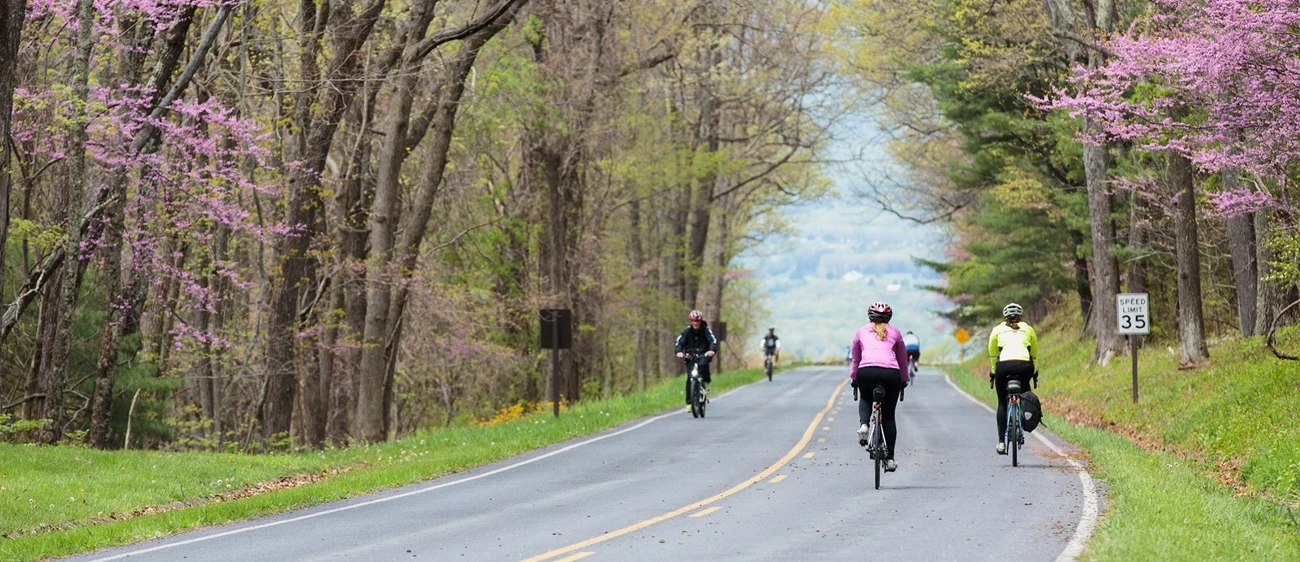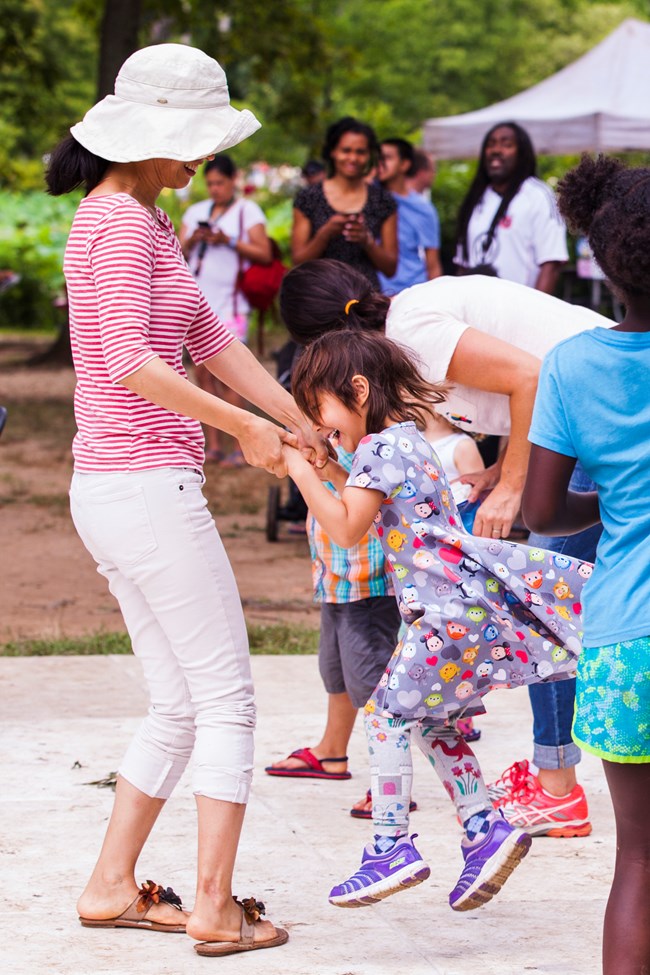Last updated: January 24, 2025
Article
Open Streets

NPS/Neal Lewis
Want to safely get your jog, bike or dance on? Open streets are the place for you!
Open streets, also known as Cyclovia, are community-based programs that temporarily open selected streets to people, by closing them to cars. Without the danger, noise, and pollution of cars, people have the opportunity to recreate freely on roads and promote the health of the environment at the same time. Types of open streets can include auto-free days on park roadways, street festivals, special events, and block parties.

NPS/Rachel Hendrix
Open street initiatives encourage healthy activities and social interaction by closing off roads to motorized traffic. Without cars on the road, the pavement becomes a site for community gatherings and fun outdoor activities such as biking, running, skating and dancing.
Open streets can improve more than just physical health. By creating safe and accessible spaces, open streets increase recreation opportunities and have a positive affect on mental health. Social interaction promoted on open streets can encourage significant improvements in mood and overall emotional wellbeing. Providing an outlet for physical activity for individuals of all ages can help reduce the prevalence of certain preventable diseases such as heart disease.
Who can benefit from open streets in our parks?
People of all ages and abilities can enjoy the health benefits of parks.
The National Park Service has identified open streets as a Healthy Parks Healthy People promising practice. Healthy Parks Healthy People promising practices are science-informed programs and policies in parks that can help people lead happier, healthier, more productive lives.
